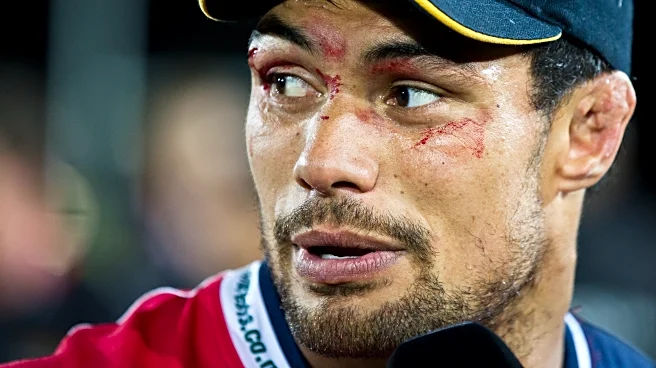What's Happening?
Shane Christie, a former Māori All Blacks player and advocate for concussion awareness in rugby, has died at the age of 39. Christie, who retired in 2017, suffered from symptoms consistent with chronic traumatic encephalopathy (CTE) due to multiple concussions. He was found dead at his home in Nelson, New Zealand, with the cause of death to be determined by the coroner. Christie had expressed a desire to donate his brain for research into CTE, a degenerative disease caused by repetitive head trauma. He was involved in setting up the Billy Guyton Foundation to study concussion effects following the death of his teammate.
Why It's Important?
Christie's death highlights the ongoing concerns about the impact of concussions in contact sports like rugby. It underscores the need for increased awareness and research into CTE, which affects athletes worldwide. Christie's advocacy for brain donation and research could lead to advancements in understanding and preventing CTE, potentially influencing sports safety protocols and player health initiatives. His contributions to concussion awareness may inspire further efforts to protect athletes from long-term health issues.
What's Next?
The coroner's findings on Christie's death may prompt further discussions on the risks associated with concussions in sports. Christie's advocacy work could lead to increased support for research into CTE and the development of safer sports practices. The Billy Guyton Foundation may continue to expand its efforts in studying concussion effects, potentially collaborating with other organizations to enhance player safety and health.
Beyond the Headlines
Christie's story raises ethical questions about the responsibility of sports organizations to protect players from long-term health risks. It highlights the cultural significance of rugby in New Zealand and the challenges of balancing tradition with player safety. The focus on brain donation for CTE research underscores the importance of scientific advancements in understanding and mitigating the effects of head trauma.












